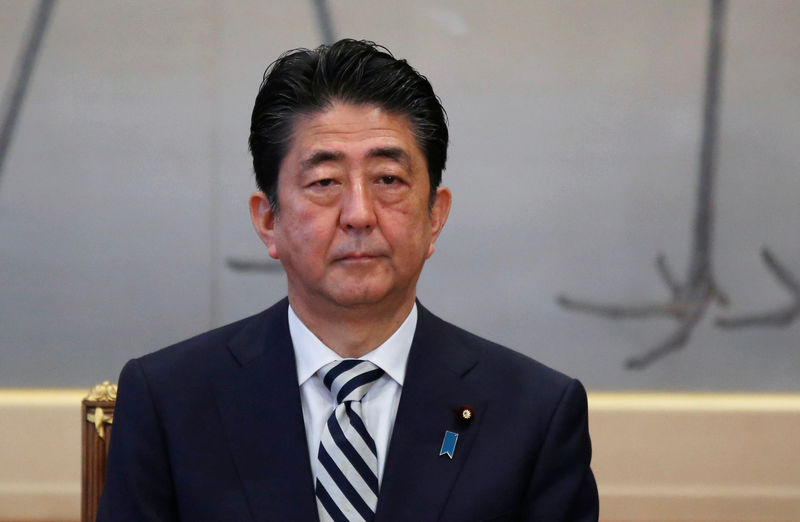 © Reuters. Japan’s PM Abe attends a meeting of the Imperial Household Council to discuss the timeline for the abdication of Japan’s Emperor Akihito at the Imperial Household Agency in Tokyo
© Reuters. Japan’s PM Abe attends a meeting of the Imperial Household Council to discuss the timeline for the abdication of Japan’s Emperor Akihito at the Imperial Household Agency in TokyoTOKYO (Reuters) – Prime Minister Shinzo Abe’s top economic advisory panel wants the coming year’s budget to reflect a combination of monetary easing and “growth-oriented” fiscal policy – while at the same time it reins in spending.
These seemingly-conflicting goals are contained in a budget outline released on Friday by the Council on Economic and Fiscal Policy (CEFP).
In the outline, the council said the budget for the fiscal year beginning April 1 should focus on varied priorities, including childcare, human capital, productivity and innovation.
“Attention should be paid to an apt combination of monetary policy with growth-oriented fiscal policy more than ever, together with structural reform, needless to say,” the outline said.
It urged the government to completely end deflation by accelerating a “virtuous cycle of economy” to achieve an ambitious target of boosting nominal gross domestic product to 600 trillion yen. ($5.34 trillion)
The outline came as Abe, who has used the central bank’s monetary easing to prioritize growth over austerity, faces pressure to spend more on social welfare, public works, agriculture and defense.
The council’s input sets the stage for the finance ministry to compile the draft budget later this month, likely to be sent to parliament in January.
DELAYED BALANCING
While urging spending in varied areas, the outline called for adhering to a goal of balancing the budget – excluding debt service and new bond sales. Abe has pushed back achieving this goal from an initial deadline of the fiscal year ending March 2021.
Abe wants to rein in bulging social-welfare spending for the ageing population. The government plans to trim growth in welfare outlays to 500 billion yen next year, 130 billion yen less than the welfare ministry seeks.
The government wants to restrain social security spending through cuts in medical fees and drug prices, but the plan has met fierce opposition from doctors and medical institutions – core support bases for Abe’s ruling Liberal Democratic Party.
Japan’s public debt has topped 220 percent of gross domestic product, which poses a serious risk and requires measures to control expansion of social welfare spending, the Organisation for Economic Cooperation and Development warned on Tuesday.
The Bank of Japan’s quantitative easing makes Japan’s debt burden more manageable as the central bank keeps yields low by buying government bonds.
However, BOJ Governor Haruhiko Kuroda’s program of aggressive government debt purchases has struggled to accelerate inflation, and some economists worry that quantitative easing has gone too far.
($1 = 112.4300 yen)
Fusion Media or anyone involved with Fusion Media will not accept any liability for loss or damage as a result of reliance on the information including data, quotes, charts and buy/sell signals contained within this website. Please be fully informed regarding the risks and costs associated with trading the financial markets, it is one of the riskiest investment forms possible.
Source: Investing.com




























